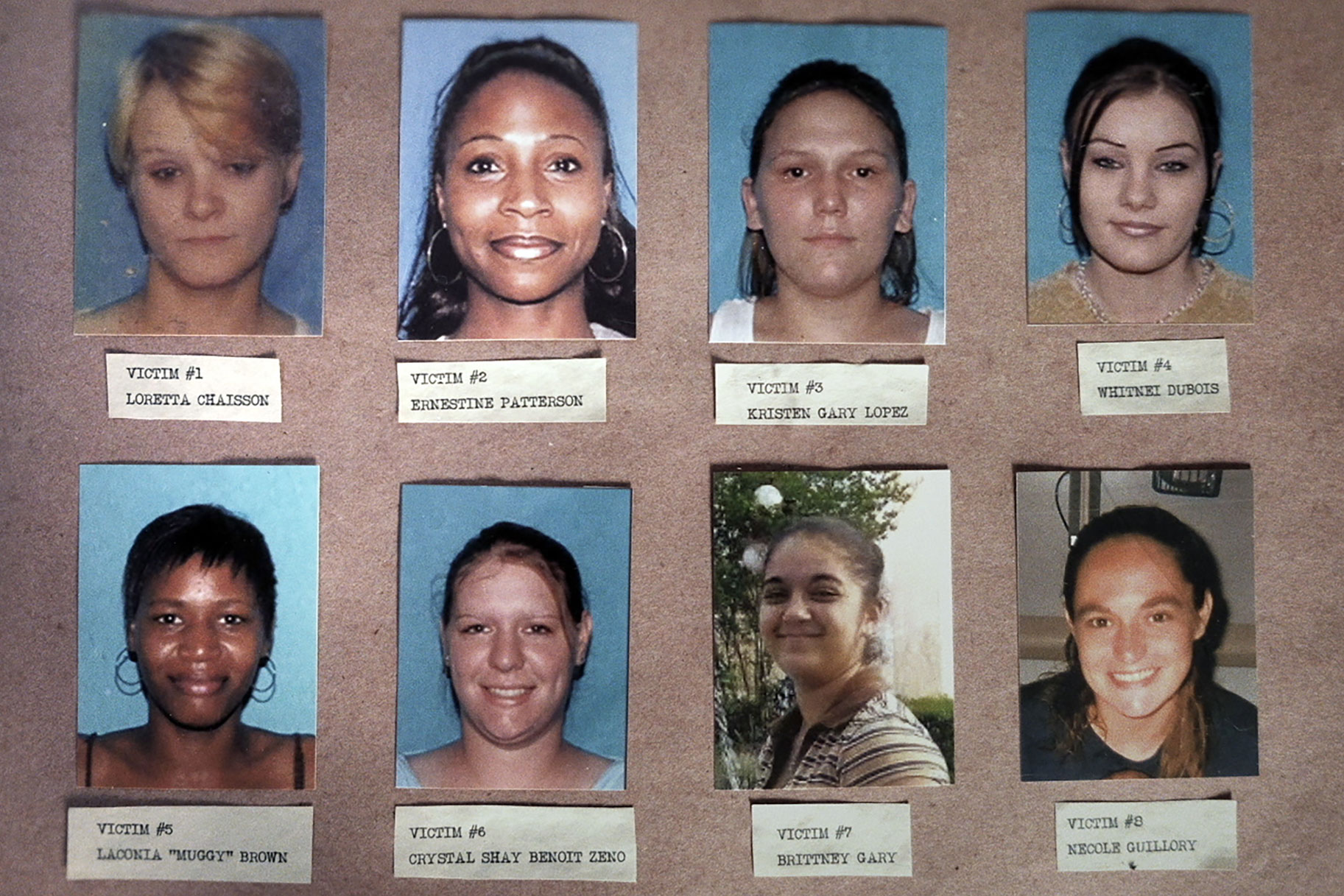Create a free profile to get unlimited access to exclusive videos, breaking news, sweepstakes, and more!
Miss ‘True Detective’? Here’s Why You Should Check Out ‘Murder In The Bayou’
'Murder In The Bayou' tells the real-life tale of eight women murdered and left abandoned in drainage canals and desolate back roads within a small Louisiana community.

In its first season, “True Detective” introduced viewers to the dangerous and deadly underworld of rural Louisiana where the mysterious death of a prostitute began a 17-year quest to find an elusive killer amidst the eerie backdrop of Louisiana bayous.
But while the story of fictional detectives Rustin “Rust” Cohle—played by Matthew McConaughey—and Martin “Marty” Hart—played by Woody Harrelson—reached its crescendo in 2014, fans of the popular series can delve back into the dark depths of rural Louisiana in Showtime’s new true crime docu-series, “Murder In The Bayou.”
This real-life series, which begins Friday, investigates the murders of eight women murdered in the small community of Jefferson Davis Parish within a four-year period. The bodies are discovered in drainage canals and desolate back roads, but as the death toll continues to climb, local law enforcement makes little progress in identifying who may have killed the women.
The victims include Loretta Lewis, Ernestine Daniels Patterson, Kristen Gary Lopez, Whitnei Dubois, Laconia “Muggy” Brown, Crystal Shay Benoit Zeno, Brittney Gary and Necole Guillory.
Much like the inaugural season of “True Detective,” as director Matthew Galkin, producer Josh Levine and executive producer Ethan Brown dig into the unsolved cases—they find possible law enforcement corruption, witnesses who turn up dead and striking commonalities between all the victims.
All eight women were known drug users and were also connected to the local sex trade.
“They all got high together. They all hung out together. They all ran together,” Sarah Benoit, one of the victim’s cousins says in the docu-series.
But while “Murder In The Bayou” may share a similar feel to the inaugural season of “True Detective” Galkin told Oxygen.com the show did not serve as an inspiration for the docu-series.
“I really didn’t want to fill my head with other crime shows, or other crime documentaries,” he said. “I ended up not watching or listing any podcasts or watching any series that had to do with true crime while we were in pre-production and production on the show.”
While it wasn’t an inspiration for the Showtime series, Galkin said much of the visual imagery looks similar to “True Detective” because the two shows were shot just a parish away from one another.
“True Detective was about Calcasieu Parish which is right next door to Jeff Davis Parish so the landscape is the same. The oil refineries are the same,” he said. “It’s like you can’t point a camera at that stuff and not shoot something that looks kind of similar.”
To capture the feeling of the town of Jennings—where many of the murders occurred in or near—Galkin and his team used a technique where they mounted a camera on top of the car to give the footage an eerie quality.
“I always had it in my head that this was a haunted place, and I had it when I read Ethan’s book and the first time I ever went down there. It just felt like a town that had secrets and a past,” Galkin said.
The docu-series was based on a book “Murder in the Bayou: Who Killed The Women Known as the Jeff Davis 8?” written by Brown in 2016.
Brown told Oxygen.com his interest in the case began while he was working for a law office that specialized in capital cases in New Orleans. Brown had a case in Calcasieu Parish and would make frequent trips along the interstate passing Jeff Davis Parish on his way.
“There were large billboards on I-10 featuring the faces of all eight women with an $85,000 reward. So, I would drive back and forth to Calcasieu and found myself immersed in this culture and then also like literally look at the women’s faces as I was driving,” Brown said.
Soon after, Brown read a piece about the unsolved murders in The New York Times and was struck by several details in the case, including the allegation that a truck connected to one of the murders was later purchased by the chief investigator of the case. He was also drawn in by the people of Jennings.
“This was a sense, more than a sense, like a really direct feeling from the moms, particularly, that like this wasn’t a murder case, it was a place where your hopes and any optimism you might have about institutions—whether they be city government, the police, the sheriff’s office—all crashed and died,” he said.
Brown would spend years investigating the case, first writing an in-depth article for Medium before turning his work into a book and then later putting together the Showtime series.
What makes the docu-series unique, is the filmmakers ability to let the people of Jennings tell their own stories through a series of raw and emotional interviews that highlight the socioeconomic discrepancies in the town and how the divide irrevocably alters the lives of the eight women who were killed.
“I think there’s way too little attention on the forces that both make us who we are and that keep us who we are, you know, particularly in an America that has so little social mobility anymore,” Brown said.
Brown and Gakin see the story as more of a look into the people and places linked to the murders than a than a true crime documentary—but also hope that by highlighting the case, the women of the “Jeff Davis 8” may finally receive some measure of justice.
“I hope that viewers take away a true sense of injustice of how something like this could happen without seemingly any consequences to the people who perpetrated these crimes,” Gakin said.














